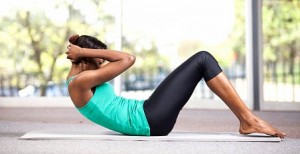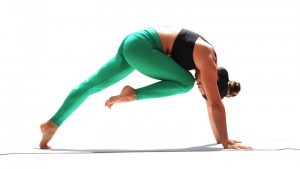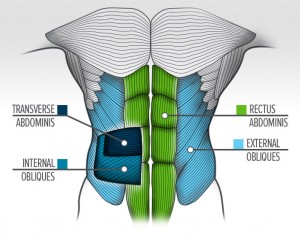During yogasana class, teachers often told the students “Engage your core”, and the students usually just contract the abdominal muscles, which is very good; but if you are looking for precision, you should actually focus on the core muscles including: Rectus abdominis, obliques, transverse abdominis, quadratus lumborum, psoas major and adductors.
Balancing and core strength are closely related, for example, strong adductors help us to perform arm-balance postures like crow pose (bakasana), psoas major can stabilize the side-bend postures such as triangle pose (trikonasana), and the transverse abdominis plays an important role to find the midline that helps a lot in all the standing balancing posetures.
Yogasana emphasizes balancing, so the core strength is very important, however, one has strong core does not mean one has visible toned abs.
Okay, visible toned abs is not the goal for yogi(ni) at all, but I am happy to share the knowledge of getting toned abs to the one who dream about it. Why not?
Briefly, abdominal muscles including:
Outer unit— rectus abdominis, external abdominal oblique; and
Inner unit—transversus abdominis, internal abdominal oblique.
As the inner unit is covered by the outer unit that covered by fat under the skin, it is obviously that one has to train the outer unit to get the visible toned abs. Men usually train both the rectus abdominis (i.e. ‘six-packs’) and external abdominal oblique (i.e. ‘apollo’s belt’). Women could focus on the rectus abdominis.
It is true that boat pose (Navasana) can train the rectus abdominis, but if you are keeping the pose steadily (even for 15 minutes), you still cannot get the visible toned abs. Here, I would introduce you two terms:
Isometric contraction – static way to train the muscles, such as holding the boat pose; and
Isotonic contraction—dynamic way to train the muscles, such as yoga sit-up. It is the way to train the toned abs.
When we are doing the yoga sit-up, it is important to keep the lumbar spine sticking on the ground, and in every exhale we should “roll up” (i.e. firstly raise up the cervical spine, then the thoracic spine). If you don’t do the “roll up”, but “straight up”, you are actually training the inner muscles.

In fact, during vinyasa yoga class, there are lots of chances to train the rectus abdominis in a dynamic way. For example, you can do a tiger curl (i.e. roll the back with one knee touching the nose) in the transition from Downward facing dog (Adho Mukha Svanasana) to Warrior I (Virabhadrasana I), and doing the ‘jump-backs’ and ‘jump-throughs’ by contracting the rectus abdominis.

Yoga is about balance, so please don’t be obsessive to one particular muscle.
Enjoy your yoga practice!
Click here for 200 hours self pace one-on-one LIVE Online YogaShe teacher training info

